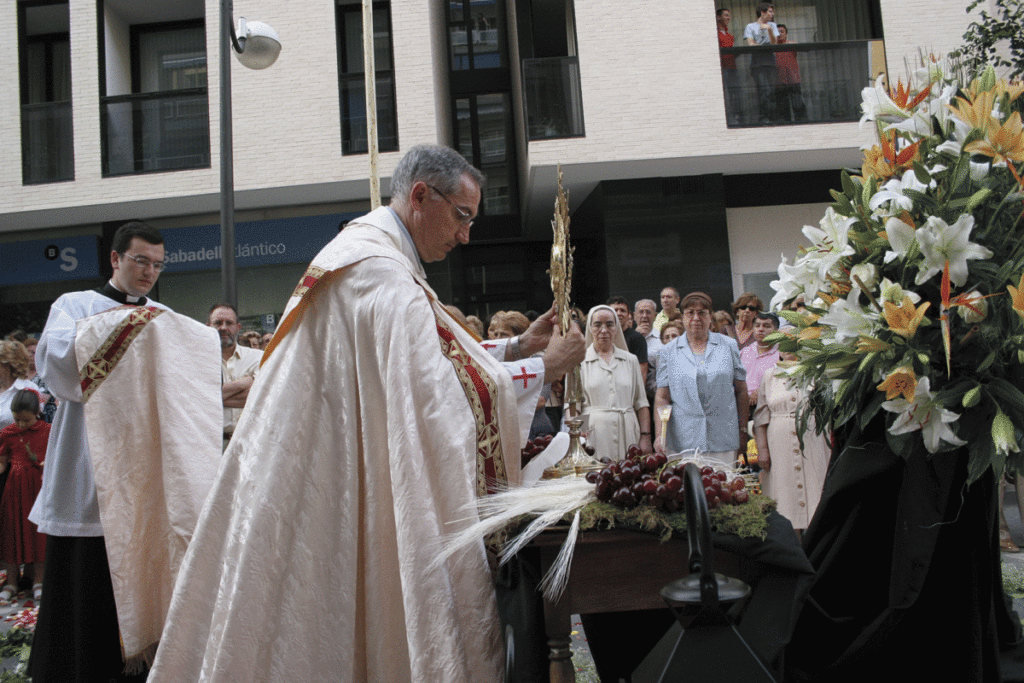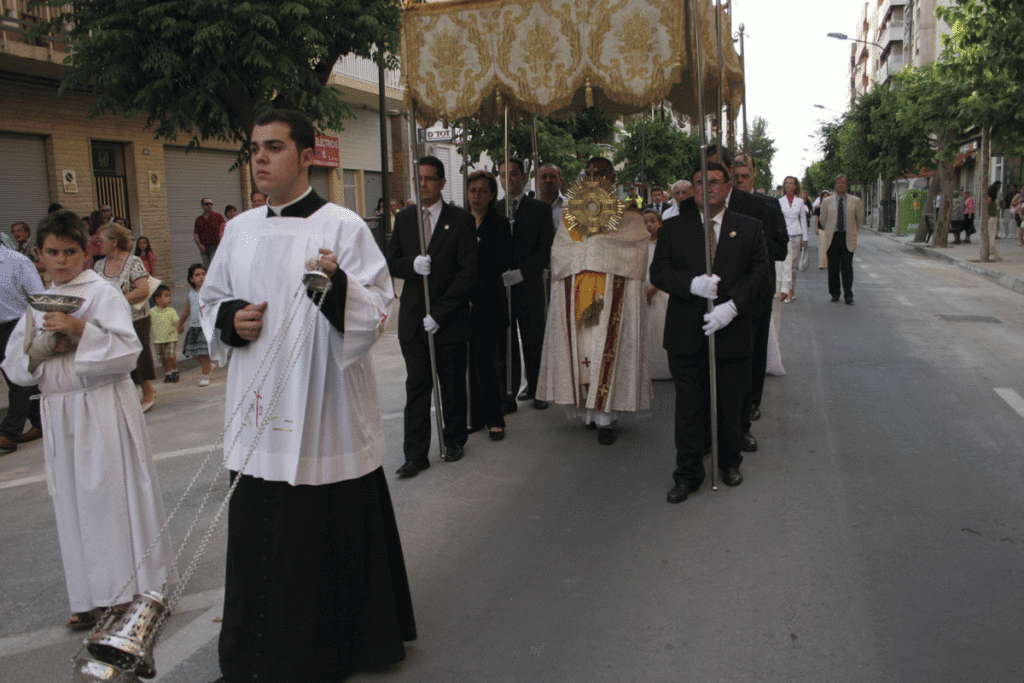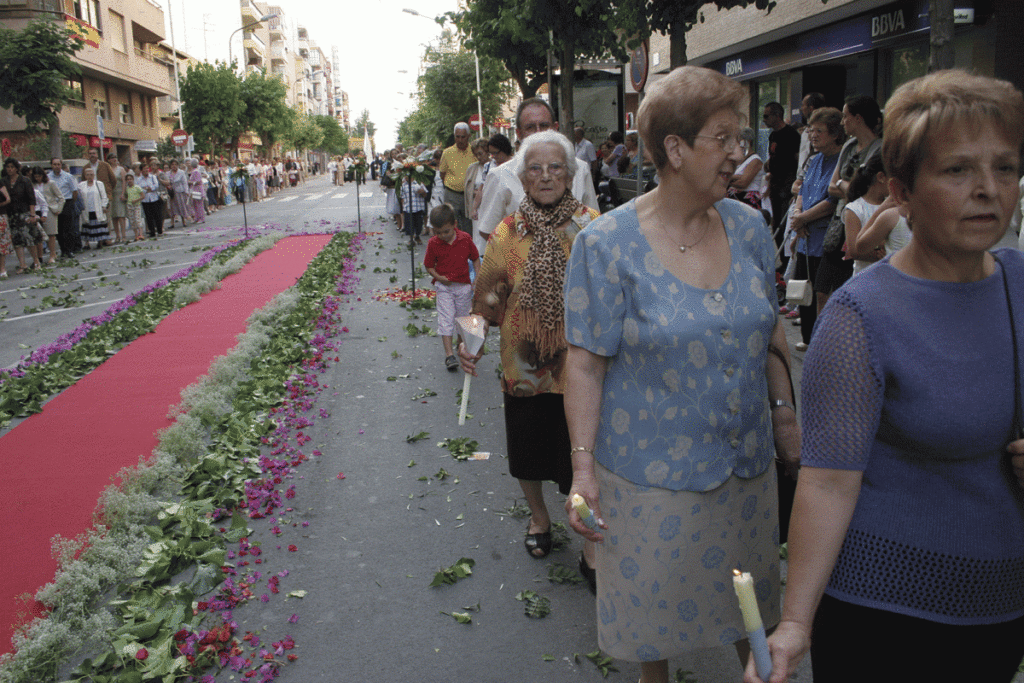Corpus Christi
Corpus Christi is one of the most important popular celebrations on the calendar in much of Europe and is still held in many places of great importance. The feast was born in the 13th century in Liège at the request of a woman, Blessed Juliana, who had contemplated various visions of Jesus Christ asking her to celebrate a feast dedicated to his body.
Pope Urban V instituted it throughout the Church on the Thursday following the Sunday following Pentecost and it reached great importance in the 14th century in the Kingdom of Valencia. The central event of the festival was focused from the beginning on the celebration of a theophoric procession in which all the guilds, associations and estates of cities, towns and villages participated accompanying the body of Christ placed in artistic custodians. Over time many popular devotional and folkloric traits were added such as dances, biblical or allegorical characters of good and evil such as moma, tarascas or dragons, artistic floats and flower carpets. In many places it acquired the category of main festival of the city as in Alicante or Valencia, where it is still known as the ‘Festa Grossa’.
In Sant Joan, until the Civil War, the procession had this widespread character. After the mass on Corpus Christi, a group of mainly young people moved several religious images from the church to several houses with patios or gardens where they prepared and decorated for the evening procession. The neighbors used to come to witness the arrangement of the images and commented, often with sorna or guasa, the appearance of these or their decoration and decoration in flowers, seasonal fruits such as brevas, apricots, cherries or pears, or sweets like rolls.
Among the participating images were Saint Peter placed in a boat, Saint Anthony Abbot in a basket of flowers, the Child Jesus of Prague or ‘of the Ball’ under four arches decorated with cherries, San Juan Bautista located in a market and decorated with flowers and brevas or San Vicente Ferrer, with a branch of apricots on his finger. Others like San Francisco de Paula were adorned with pears and apples. Among the images was that of Santa Isabel known as ‘Santa Guisabeleta’ which was the least graceful and which everyone took with joke and laughter, generating a spectacle in its path.


Before the procession, the images were taken to the church from where the entire procession departed clearly differentiated into two parts: the first, the procession of the images which was a traditional, funny and funny show, almost a cavalcade; the second, the purely religious part in which the custody under pallium participated, accompanied by several faithful devotees, the authorities and the band, at which time the public became respectful.

The day of Corpus was the inauguration of the summer season and finished the procession, the corporation invited the public to an ice cream made with the snow of the ‘pous de neu’ located in the Carrasqueta. Then a festival took place and the church remained illuminated with oil lanterns placed on the cornices.
Today the feast of Corpus in Sant Joan d’Alacant consists of the procession through the streets of the town in which those who wish to participate. Children who have taken communion in the last year play an important role in the procession. The procession closes with the custody of the body of Christ that is carried by the priest under a pallium of eight rods carried by men and women. On the way there are several altars decorated with tapestries, flowers and ornaments and made by neighbors where breaks are made that culminate with the blessing, at which time children throw flower petals to the Sacrament. The event involves several festival and musical entities of Sant Joan.
In recent years it has also tried to recover the popular splendor with the presence of dances and flower carpets at the party. It is also the first celebration of the year in which traditionally the musicians of the band of Sant Joan, as in many other places, adopt the summer uniform.
Did you know that...?
The schedule of the procession has varied depending on each place. In the territories of the Crown of Aragon, the procession was celebrated in the afternoon, while in the territories of Castile in the morning, a custom that has been maintained today.
At the Second Vatican Council, the Church sought to restore purity to Christian religious celebrations and sought to suppress certain rites or customs of popular piety that diverted attention from the fundamental questions of faith, which in the case of the Corpus would be translated to give more importance to the Eucharist, suppressing other elements such as giants and bigheads, profane dances or bizarre characters of the procession. In many places this measure was introduced so that the Corpus processions were reduced to the merely religious part around the body of Christ in the custody, although in recent years there has been a resurgence of the old traditional elements contained in the parade as dances and characters that accompanied the procession, understanding its socio-cultural, anthropological and patrimonial importance.
